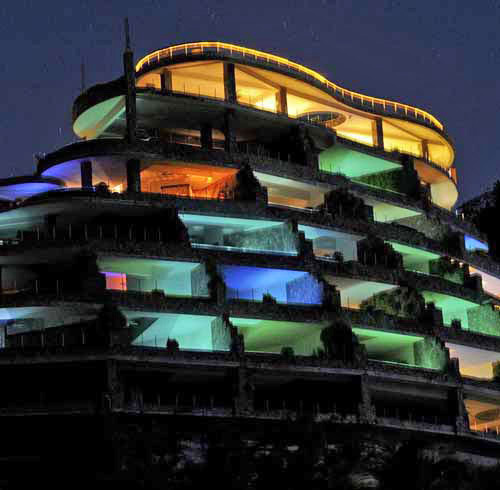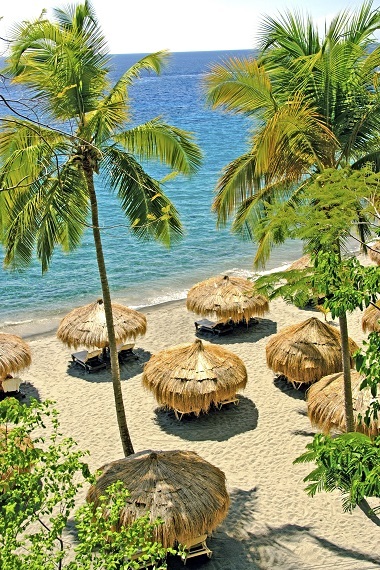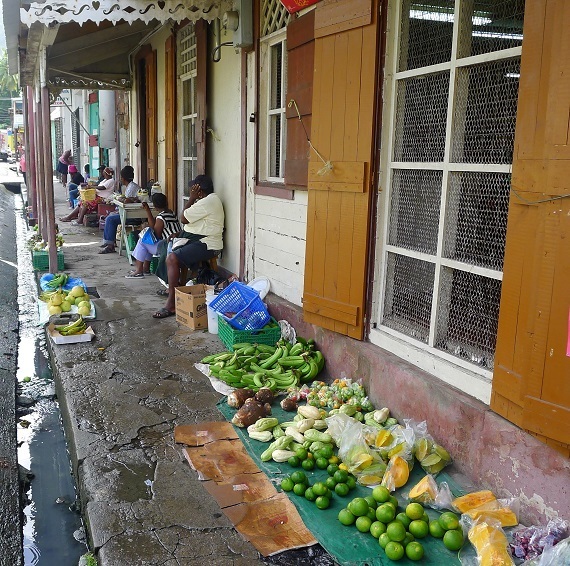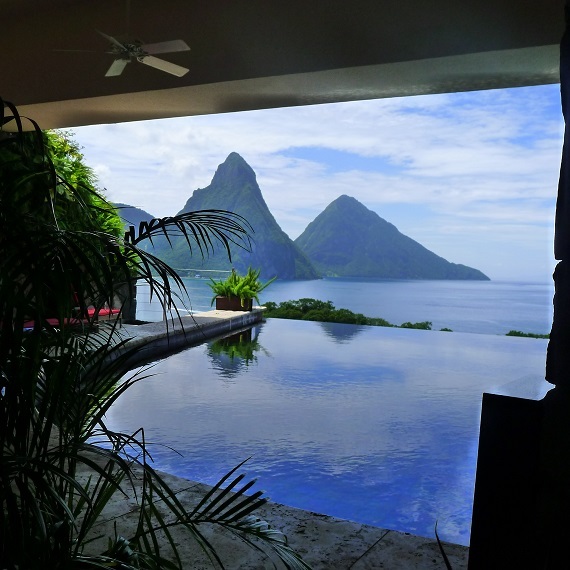No one is really sure how the southern Caribbean island of St. Lucia got its name. A popular story says it came from the day in 1498 when Christopher Columbus first saw the island. It was Dec. 13, the feast day of the martyred Sicilian virgin St. Lucy.
Critics note that sounds like an odd choice for a name, because the island is one of the prettiest spots in the Caribbean, known for its soaring, Bora Bora-like volcanic peaks, and St. Lucy was a patron saint of the blind.
It's generally accepted, however, that Columbus didn't come ashore on the island. He's lucky he sailed on, because he might very well have ended up in a stewpot. St. Lucia was inhabited by the Caribes, who were feared as cannibals, as occasional French, English, Spanish and Dutch would-be settlers found out - the hard way.
Caribe-style feasting went on for over a century, until the Caribes were whittled down by mumps, smallpox, scarlet fever and other diseases of their digested foreigners. The French (considered the tastiest of the Europeans, local legends say) finally signed a treaty with what was left of the Caribes in 1660. After numerous wars between the French and British - each raised its flag over St. Lucia seven times - Great Britain finally won out in 1814.
Today, the 27-mile-long, 14-mile-wide island is a member of the British Commonwealth, but with strong French ties. Tourists are usually happy to find that English is the island's official language (although St. Lucians also speak in their own creole, which for most outsiders might as well be a mix of Turkish and Botswanan). French is often spoken (along with creole) in the smaller cities.
It's hard to resist trying out your high school French in small towns like Soufriere on the southwest coast of the island. Lining its lanes are yellow, pale blue and grassy green colonial-style stores and homes that haven't changed much over the centuries (although the guillotine in the town square is long gone).
Crossing the narrow streets of Soufriere can be something of a challenge since they're shared by pedestrians, cars, bicycles, motorcycles and chickens. Local drivers generally ignore the town's handful of stop signs.
Right off the Postcards
Look up from Soufriere and you'll see the island's crown jewels: twin volcanic peaks called the Pitons. Soaring up to the clouds a half-mile above the beach, these world-class gems are right up there with such stunningly gorgeous sights as the volcanic spires of French Polynesia, the Grand Tetons towering over Wyoming's Jackson Hole and the Rocky Mountains over Denver.
It's no wonder that some of the island's most exotic hotels - and St. Lucia has plenty of them - offer eye-popping views of the Pitons. A resort named Jade Mountain for example, features 24 suites known as "sanctuaries" facing the peaks from a nearby mountaintop. Perhaps you've seen this place on the covers of the travel magazines, or maybe you saw a neighboring resort called Anse Chastanet where guests can ooh and aah at the Pitons from rooms on the lower hillsides and along the beach.



